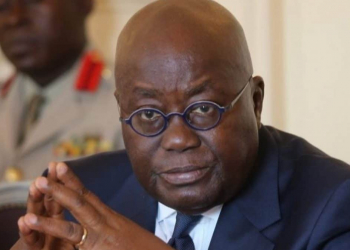Growth of demand deposits (current and savings accounts) grew more than time or fixed deposits as at the end of November 2016, according to the latest summary of Macroeconomic and Financial Stability report by the Bank of Ghana.
While demand deposits grew by 22.4 percent in November 2016, time deposits shot up by 15.5 percent.
Its growth was also higher in the months of October, September and August 2016 respectively than time deposits.
Growth of currency outside banks also continued to remain high, growing by 20.2 percent in November 2016 as against 10.6 percent in October 2016 and 16.9 percent in September 2016 respectively.
The report stated that deposits shot up consistently from August to December 2016, to hit GH¢51.4 billion. August, September, October and November 2016 registered deposits of GH¢44.2, GH¢44.3, GH¢47.2 and GH¢48.0 billion respectively.
Liquidity ended the year 2016, growing by 20.8 percent in December 2017. It was high in March 2016 with growth of 28.7 percent, August 2016 with 25.9 percent growth and 25.9 percent in July 2016 respectively.
Foreign currency deposits however fluctuated within the period growing by 110 percent in December 2016. In November and October 2016, it grew by 11.6 and 11.5 percent respectively.
The local currency ended the year 2016 with a depreciation of 9.6 percent against the US dollar. It has however depreciated by 0.8 percent against the American greenback.
The report further stated that total assets of the banking industry stood at GH¢80.9 billion at the end of 2016. This is against GH¢70.8 billion in September 2016, GH¢73.8 billion in October 2016 and GH¢77.5 billion in November 2016 respectively.
Loans and advances also went up to GH¢35.5 in December 2016, from GH¢34.5 billion in November 2016.
Commenting, Banking Consultant, Nana Otuo Acheampong, said the indicators shows that the Ghanaian banking industry was strong and well positioned to support the economy. “The banking industry looks good; it is one of the strongest in West Africa and we must support them to become giant ones.”
The banking sector’s capital adequacy ratio increased from 17.1 percent in November 2016 to 17.6 percent in December 2016.
Non-performing loans reduced from 19.0 percent in September 2016 to 17.4 percent. The banks in Ghana made a provision of about 8.4 percent as bad debts in their books at the end of July 2016, the latest Financial Stability Report indicated.
The performance could once again affect the bottom lines of some banks at the end of the year though they are yet to release their financial statements.
Banks operating in Ghana registered a loss of 1.0 percent in the first seven months of 2016. This is compared with 15.0 percent profit achieved in July 2015
Join GhanaStar.com to receive daily email alerts of breaking news in Ghana. GhanaStar.com is your source for all Ghana News. Get the latest Ghana news, breaking news, sports, politics, entertainment and more about Ghana, Africa and beyond.


